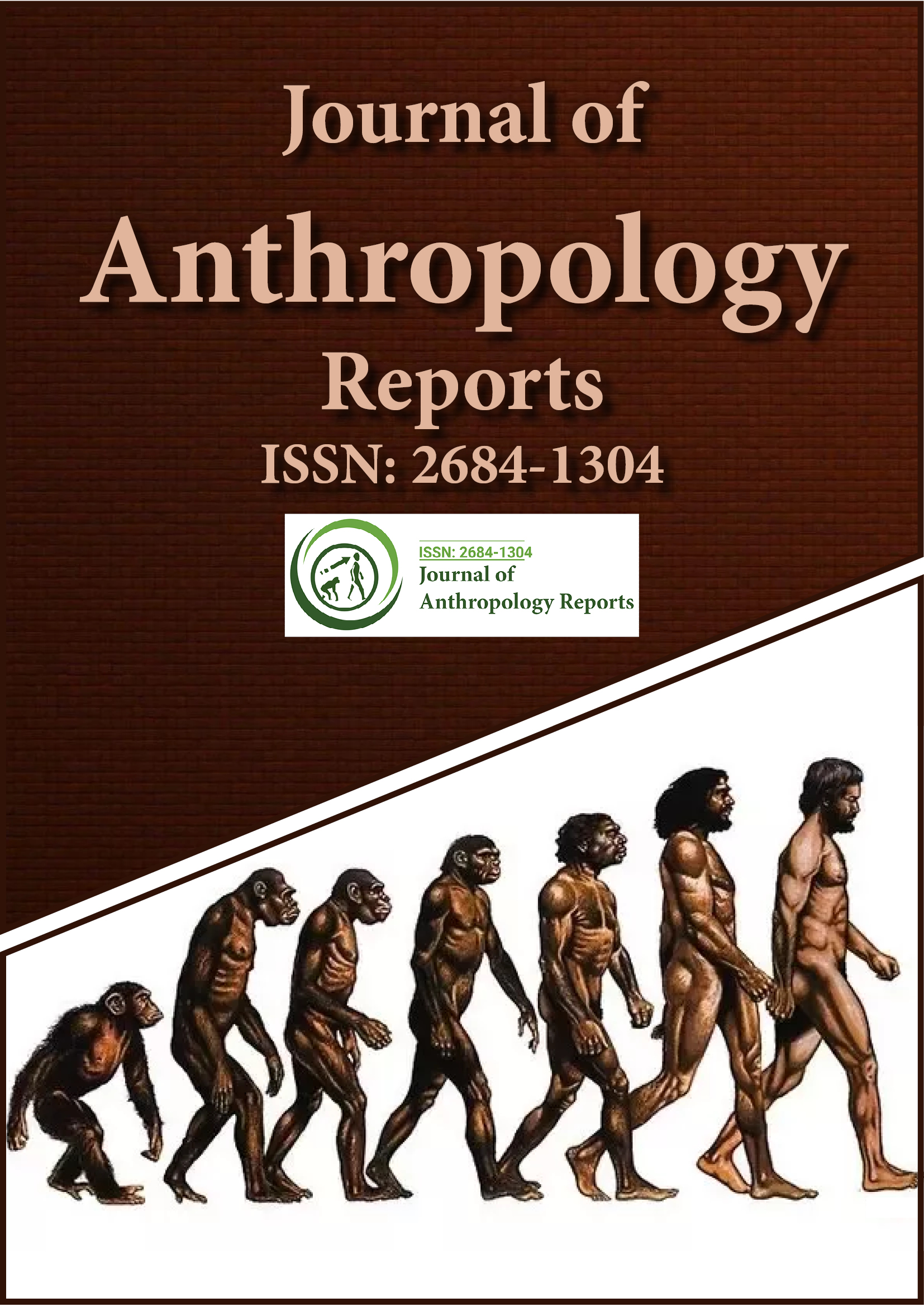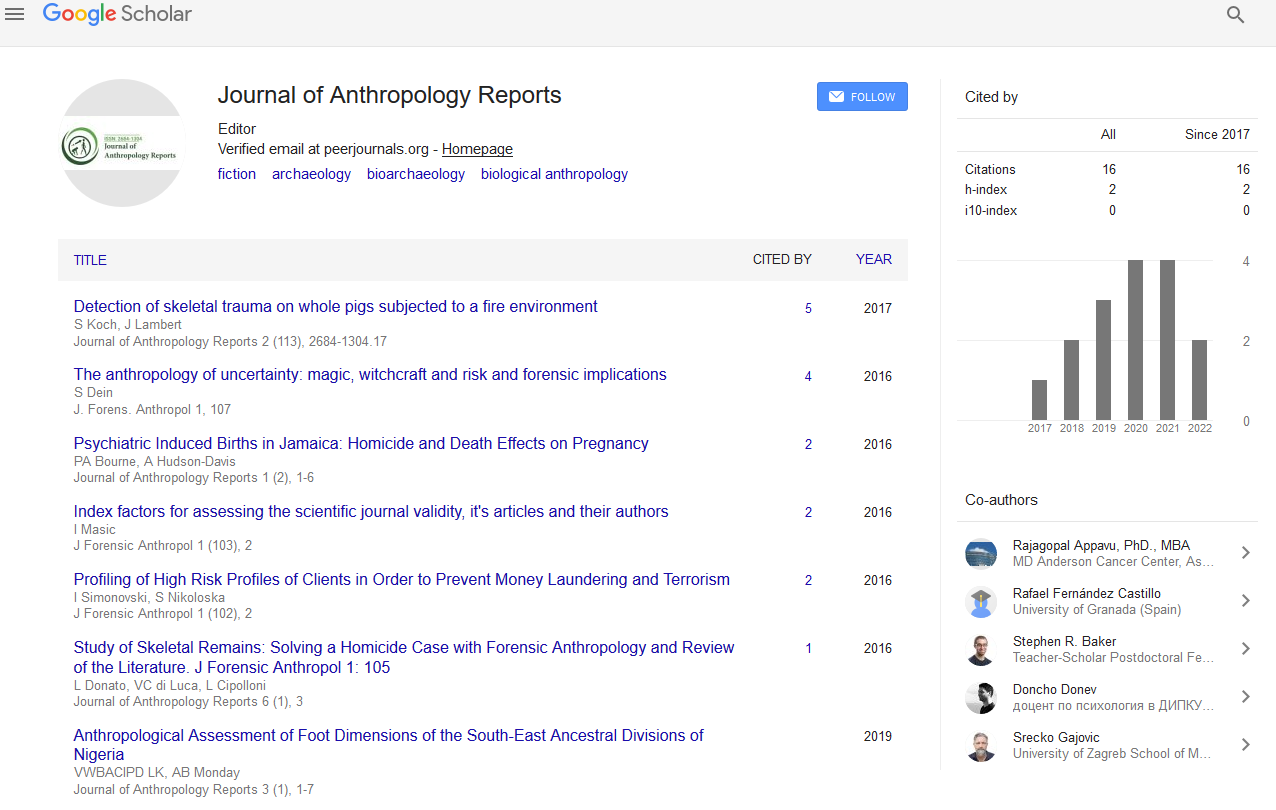Indexed In
- RefSeek
- Hamdard University
- EBSCO A-Z
Useful Links
Share This Page
Journal Flyer

Open Access Journals
- Agri and Aquaculture
- Biochemistry
- Bioinformatics & Systems Biology
- Business & Management
- Chemistry
- Clinical Sciences
- Engineering
- Food & Nutrition
- General Science
- Genetics & Molecular Biology
- Immunology & Microbiology
- Medical Sciences
- Neuroscience & Psychology
- Nursing & Health Care
- Pharmaceutical Sciences
Commentary Article - (2022) Volume 5, Issue 3
Important Aspects of Biological Anthropology
Micayla Spiros*Received: 04-May-2022, Manuscript No. JFA-22-17028; Editor assigned: 06-May-2022, Pre QC No. JFA-22-17028(PQ); Reviewed: 23-May-2022, QC No. JFA-22-17028; Revised: 30-May-2022, Manuscript No. JFA-22-17028(R); Published: 07-Jun-2022, DOI: 10.35248/2684-1304-22.5.126
About the Study
Biological anthropology, also known as physical anthropology, is a scientific discipline concerned with the natural and behavioral aspects of mortal beings, their defunct hominine ancestors, and related on-human primates, particularly from an evolutionary perspective. The abecedarian subject matter of physical or natural anthropology is an interest in, and a disquisition of, mortal origins and mortal variation. This interest dates back to age, but professional jotting on similar motifs might be said to have begun with the Enlightenment of the eighteenth century.
The Enlightenment was also a time when the conception of race was homogenized and colorful ethnical bracket systems were proposed. Race as a typological characterization of mortal variation was to come a dominant theme in physical anthropology until the mid-twentieth century. Bracket, an essential structure block of all lores, was first conducted for humans by the great Swedish taxonomist also known as Linnaeus.
The linked the close connections between humans and nonhuman primates; classified Homo sapiens as a member of this primate order Anthropomorphic also, latterly, Primates and linked several ethnical kinds, both known and fabulous. Johann Friedrich Blumenbach, the German croaker and anatomist, followed Line’s geographic four-fold bracket system of mortal kinds from America, Asia, Africa, and Europe, but latterly added a fifth variety, Malay, to represent Pacific populations. Some identify Blumenbach as one of the authors of physical anthropology because of his interest in mortal kinds and in mortal craniology.
Biological anthropologists frequently look at the biology of mortal remains, including once diets and the frequency of ancient conditions. Bones and other remains give enormous suggestions regarding the lives of ancient peoples and how they interacted with their surroundings. Biological anthropology also called physical anthropology also is an intriguing admixture of social studies and natural studies; several other constituents make it indeed more fascinating. The two primary conception areas that tend to hold natural anthropology together are mortal elaboration and mortal biosocial variation; there are numerous motifs that can be studied within these two conception areas.
In order to grasp how humans evolved from earlier life forms, we can look at our closest cousins, the primates. Primates include us Homo sapiens, the hams, the monkeys, and prosimians, similar as the lemur. We can learn about primate geste by studying them in the wild, as Jane Good all did with chimpanzees in Africa, or by studying them in small interned colonies. These studies by primatologists are particularly important now because numerous primates are risked creatures, and our knowledge of their geste and terrain may help them and us to survive in the future.
We can use the ways of archaeology to uncover the cadaverous remains of our ancestors from the distant history. The instigative findings of mortal paleontology the study of fuds have pushed back our strain as tool- using humans who walked on two legs to several million times. As Louis Leakey showed us, our early mortal ancestors presumably hunted and grazed for food on the mainland of Africa long before North and South America or Australia were inhabited by people. Although we've learned a great deal about our ancestors within the last many decades, we're far from having a clear picture of our evolutionary history, and there's still much further to learn.
Citation: Spiros M (2022) Important Aspects of Biological Anthropology. J Anthropology Rep. 5:126.
Copyright: © 2022 Spiros M. This is an open access article distributed under the terms of the Creative Commons Attribution License, which permits unrestricted use, distribution, and reproduction in any medium, provided the original author and source are credited.<

